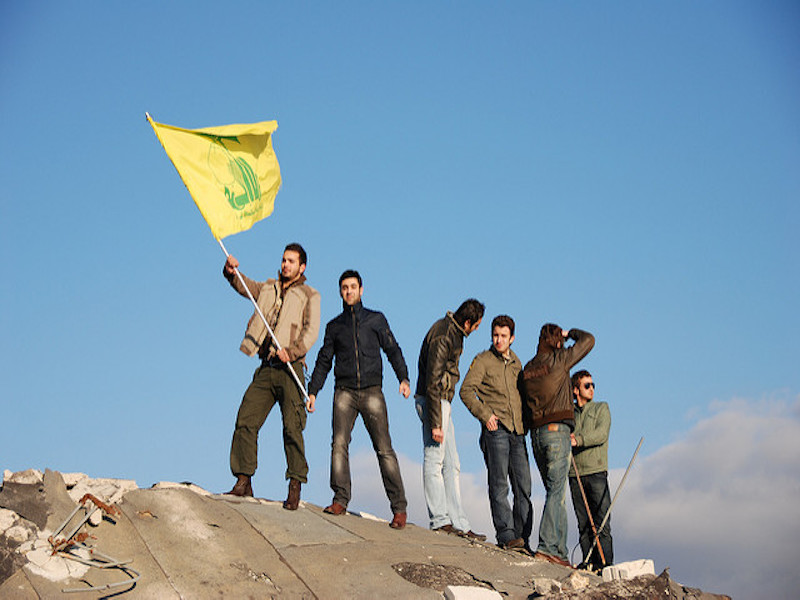There are almost no examples in modern history of a militia organization that can amount to the level of strategic success that Hezbollah has been, and especially to Iran. What people, states and organizations think of Hezbollah polarizes popular opinion, though its reach has become undeniable. On May 6, 2018, Hezbollah and its Lebanese political allies performed remarkably well in the Lebanese parliamentary elections, becoming the single biggest parliamentary grouping.
Origins
Hezbollah as an organization was formed in 1982 as a fighting force in southern Lebanon against the Israeli occupation. The occupation from the border all the way up to Beirut was entrenched and many different groups fighting against it were also fighting one another in the 15-year Lebanese civil war.
Hezbollah was a policy tool of Iran. As a Shiite majority country, Iran has always projected its identity as a protector of Shiites around the Middle East, and especially to those who have been marginalized, repressed or whose interests have been ignored entirely by the state that cannot claim to represent them. Lebanese Shiites made up roughly a quarter of the population, but were significantly politically and economically underrepresented.
The Lebanese State
Hezbollah’s position, power, and influence have always varied in Lebanon, but whether it should exist or not has hardly been a question asked within the country’s tiny borders. Not only is it a militia, but it is also a political party that has significant political power in Lebanon. By pushing the Israeli army back from Lebanese territory on more than one occasion, Hezbollah legitimized itself not just within the Shiite population, but also to a wider segment of a population that viewed it as the “resistance” against any and all foreign intervention, especially that of Israel.
It’s image as a legitimate Lebanese entity was damaged when it was accused of orchestrating the assassination of the beloved former prime minister Rafiq Hariri, but it quickly regained it in the summer of 2006 when it defended against another war with Israel, the Middle East’s most formidable military.
To its critics, Hezbollah is an Iranian proxy doing Iran’s bidding, which could never be independent of its patron, and would not always have Lebanon’s best interests in mind, thus undermining the Lebanese state. These concerns are legitimate, as it threatens to create a parallel state within Lebanon, one being voted in, and the other reporting to Tehran.
In 2013, the critics’ fears were realized when Hezbollah intervened in the Syrian Civil War to protect its ally Bashar Al-Assad from being deposed. Lebanon’s official state policy regarding the war was that of neutrality, due to the delicate sectarian balance that could threaten to plunge the country into civil war. Despite Hezbollah’s legitimacy being dented, its venture into Syria was shockingly successful, turning it into a regional player and transforming Hezbollah from a militia, into an army.
On top of that, Hezbollah and its allies won nearly all of the seats they ran for in the Lebanese parliamentary elections of this year, the first in 9 years. This makes them the largest political entity in parliament and significantly larger than its last representation in parliament. Although Lebanon’s political make-up is too complex to consider Hezbollah to be the decision maker in the country, it will now still be much more difficult to blur the line between the militia and the state.
International Concern
The confusion regarding Hezbollah’s status can mostly be explained by looking at foreign nations’ relations with it. The United States, Saudi Arabia & its allies, and Israel have designated it as a terrorist organization. The European Union, on the other hand, makes an important distinction between Hezbollah’s armed wing and its political wing, referring to the former as a terrorist organization, but not the latter.
At a time when the Middle East is experiencing serious upheaval, the security, governance, and legitimacy vacuums in the region become easy to permeate, and the creation of similar groups is increasingly possible. This phenomenon that can already be seen in Libya, Yemen, Syria, Iraq, and Somalia.
Kuwait, Morocco, Bahrain, the United Arab Emirates, Saudi Arabia, and multiple European and South American countries have had their issues with the group over the decades, but its ties to the Houthi rebels in Yemen have been the most pronounced yet. The Houthi’s resemblance to Hezbollah is of major concern to Iran’s enemies, as it proves that Hezbollah is not just an outlier, but rather a model that could be successfully replicated.
The Popular Mobilization Forces (PMF) in Iraq is already an example of this. The PMF, numbering up to 150,000 people, has been successful in fighting off Daesh, but remains allied to Iranian Shiite clerics, especially Ayatollah Khamenei, and has thus sparked sectarian tensions across the country. The Iraqi parliament legitimized their presence as a paramilitary force through legislation, but their allegiances do not belong to the government. Such a scenario is the exact realization that was feared in Lebanon – that a parallel state would emerge.
As long as central governments in the region continue to be slow to address all of their citizenry’s economic, political, and social needs, the vacuum will continue to grow, and regional and international powers will continue to take advantage of their grievances to establish a foothold of influence similar to Iran’s in Lebanon, Yemen, and Iraq. While the nation-state erodes, a return to sectarian tribalism is only a matter of time.
Photo: Lebanese youth posing with a Hezbollah flag on the ruins of the former SLA prison in Khiam (2007), by Paul Keller via Flickr. Licensed under CC BY-NC 2.0.
Disclaimer: Any views or opinions expressed in articles are solely those of the authors
and do not necessarily represent the views of the NATO Association of Canada.




